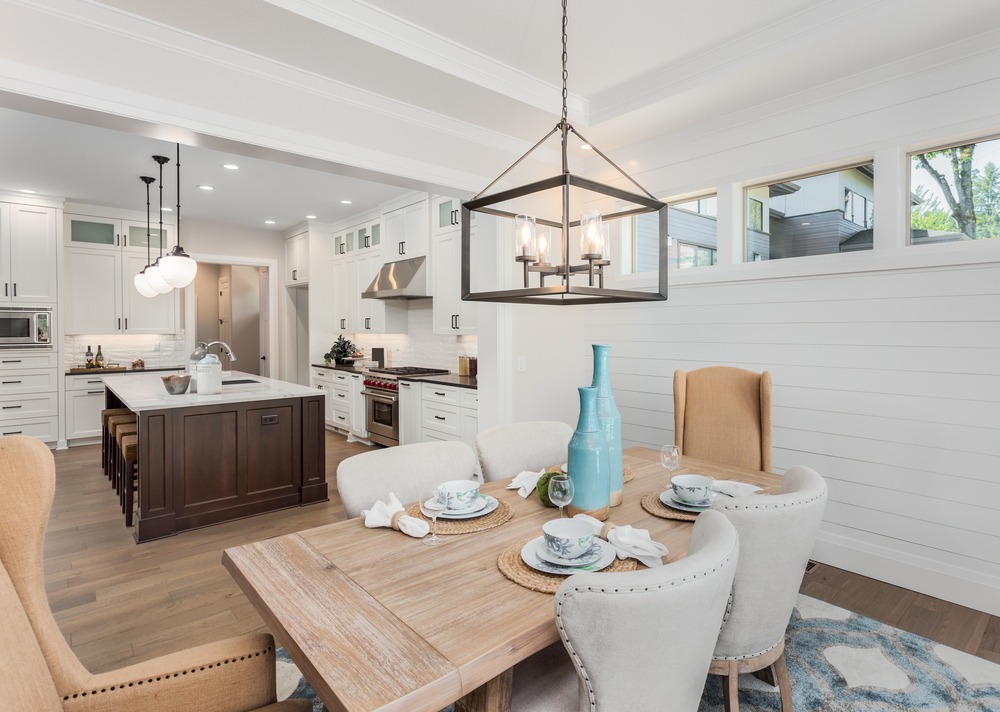Leverage Defined
Staging a home is the art of decorating without decorating- of giving a home context without content. It’s also true that a well-staged home is far likelier to sell and for a higher price. The purpose of staging a home is to give your buyers a canvas to imagine how their own lives could fit perfectly into the open floors and clear spaces of a freshly updated home.
So as you begin decorating an investment home for a glorious reselling, staging is the icing on top and its to highlight all of your beautiful improvements.
With this newsletter, we are diving into the staging techniques that will build on your hard work to help buyers envision their new lives and BUY!
Color: Contrasting Neutral Tones with Splashes of Accent Color
When it comes to selling a home, everything starts with color. Assuming you have already chosen a flattering color scheme and had the house painted, staging a home does not stray from the trend of neutral tones. Pick furniture and accent pieces that both blend and contrast your paint in the same neutral color palette. Many stagers use beiges, browns or grays for a soft look or a white-and-glass theme for a trendier modern style as the base design. A little color goes a long way. No more than one to three accent splashes per room. Dark browns also make a rich accent without any color preference at all.
Color Accent Pieces
- Throw Pillows
- Decorative Bowl
- Vase of Flowers
- Framed Neutral Artwork
- Folded Throw Blanket
Furniture: Provide Context, Maximize Floor Space
The number one home stager’s trick is to use furniture not to fill the space, but to make it seem bigger. Furniture in staging isn’t there for comfort, it’s there to provide context. You want to help buyers to look into a room and see a little home office, a kitchen dining area, or a child’s bedroom in the most minimal terms. Even if they do something entirely different, a few touches of furniture can get the imagination spinning on what they would do with each room.
Qualities of Good Staging Furniture
- Deceptively Small Furniture
- Pale and Neutral Colors
- Spindly Legs
- Glass Tops
- Minimalist Style
Maximize floor space. Pull furniture a foot or more away from the walls and use deceptively small furniture to make the rooms look even bigger while providing that touch of inspiration in how the rooms might be used.
Decorations: Minimal & Neutral, Little Touches & Clear Surfaces
When you decorate, don’t go all out. Never put more than one element of decor for each surface, including each wall, counter, and table. Instead, find the perfect accent pieces to make a room look decorated but in the most minimal way possible.
Remember, the goal is to help your buyers think of what they would put there. To imagine their grandmother’s dishes and their heirloom centerpiece on the dining room table. To imagine their books on the shelves, their cookware in the kitchen, and their art on the walls. So don’t write in too much for them; leave some of the space for them to be filled with their personal touches.
Lighting: Illuminate and Create the Illusion of Larger Spaces
Illumination is key to a great staging project. You want your spaces to be flooded with light so that every detail is highlighted without actually blinding your potential buyers. The more evenly distributed the light, the better. This is also your chance to make small spaces look larger with a combination of lighting and clever accents.
Making a Space Look Larger and Brighter
- Remove Window Treatments
- Wash both sides of the windows
- Hang Mirrors Instead of Art
- Diffuse Light and Distributed Canister Lights
Audience Targeting: Know the Most Desired Room Types
Know your audience. Know the neighborhood you are selling in and their typical buyers. Know the types of buyers who are most likely to be interested in each specific property. Know when you’re staging a home for parents versus retirees or college students, and stage the rooms accordingly.
It all comes down to how you decorate the spare living areas and bedrooms. Parents might enjoy seeing twin beds, retirees might like to see a sunny craft room, and young professionals or students may value a spacious home office if you had to choose just one. Knowing your audience can also help you target your decoration pieces and whether to go soft or modern in your neutral decor style.
Strategizing Your Staging
Finally, you will need to strategize your staging plan. Its expensive to own and have extra furniture and decorations for your flips, using professional stager is often the best solution. Renting furniture or hiring a professional stager along with their bag of tricks is easier and worth the cost.
In Conclusion
The key to wise real estate investment is focusing on every detail from buying at the right price, not over leveraging on your loan, making improvements that matter, and staging a home for the right buyer in the right neighborhood.
At Center Street Lending we can help you worry less about your financing needs by helping you structure a loan that’s right for you and your investment goal. We add value to our investors by sharing our real estate experience and market insights. We work with you to structure a loan that makes sense and our Loan Origination Managers and Executive Team is available to help with any question you may have.
Center Street Lending takes pride in developing long-term relationships with our clients. In fact, a majority are repeat customers due to our professional service, financing counsel, and attractive loan terms.

